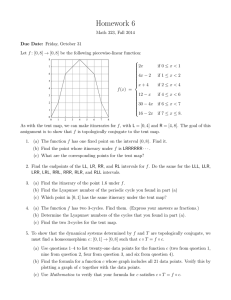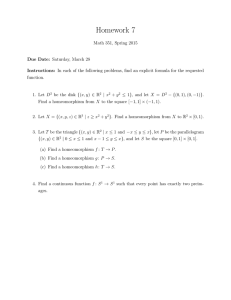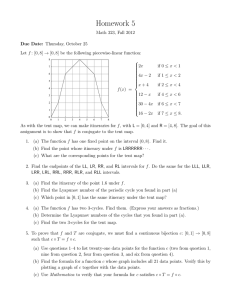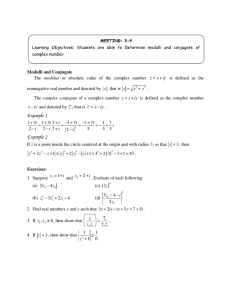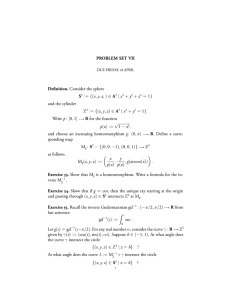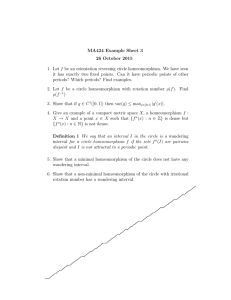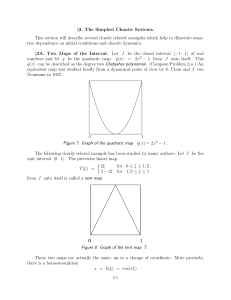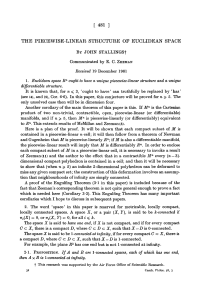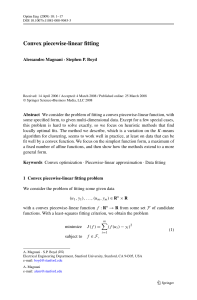Homework 6
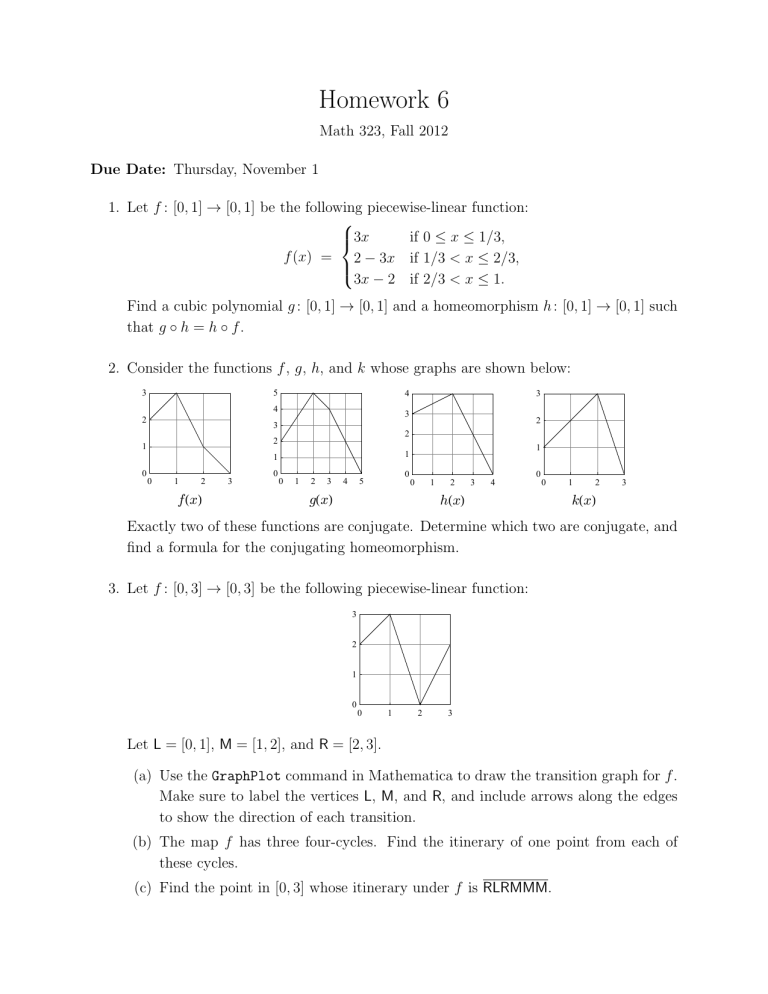
Homework 6
Math 323, Fall 2012
Due Date: Thursday, November 1
1. Let f : [0 , 1] → [0 , 1] be the following piecewise-linear function: f ( x ) =
3 x
if 0 ≤ x ≤ 1 / 3 ,
2 − 3 x if 1 / 3 < x ≤ 2 / 3 ,
3 x − 2 if 2 / 3 < x ≤ 1 .
Find a cubic polynomial g : [0 , 1] → [0 , 1] and a homeomorphism h : [0 , 1] → [0 , 1] such that g ◦ h = h ◦ f .
2. Consider the functions f , g , h , and k whose graphs are shown below:
3
2
1
0
0 1 f
H x
L
2 3
5
4
3
2
1
0
0 1 2 3 4 5 g
H x
L
4
3
2
1
0
0 1 2 h
H x
L
3 4
3
2
1
0
0 1 k
H x
L
2 3
Exactly two of these functions are conjugate. Determine which two are conjugate, and find a formula for the conjugating homeomorphism.
3. Let f : [0 , 3] → [0 , 3] be the following piecewise-linear function:
3
2
1
0
0 1 2 3
Let L = [0 , 1], M = [1 , 2], and R = [2 , 3].
(a) Use the GraphPlot command in Mathematica to draw the transition graph for f .
Make sure to label the vertices L , M , and R , and include arrows along the edges to show the direction of each transition.
(b) The map f has three four-cycles. Find the itinerary of one point from each of these cycles.
(c) Find the point in [0 , 3] whose itinerary under f is RLRMMM .
